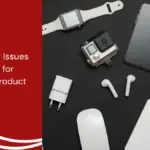Voice over Internet Protocol (VoIP) phone technology is very useful for business people, especially for small businesses. VoIP phones can be used from wherever employees are and calls can be transferred seamlessly from office phones to mobile phones.
VoIP phones can also extend conversations from SMS to voice calls to video conference calls, all in the same application.
The flexibility, security, and affordability of VoIP Phones is a technology to consider for your business. However, you have to adjust the types of VoIP that are suitable for your business.
Also Read
In this article, you will be informed about the types of VoIP phones which can add to your knowledge regarding VoIP.
Table of Contents
Types of VoIP Phones

Voice-over IP technology is very versatile. This technology can be used on traditional desktop phones, USB headsets, conference phones, cell phones, and almost any computer, smartphone, or tablet that can download apps.
1. Standard desktop phones
Desk IP Phone IP looks and functions similar to a traditional office phone. The difference is that these phones connect via an ethernet cable and send voice calls using VoIP.
VoIP desk phones for business offer the most comprehensive range of features available. Most have an LCD screen that displays important information, including caller ID.
More advanced models have full-color touch screens for advanced productivity and can handle more than a dozen unique phone lines. Some models are equipped with Bluetooth technology, which allows users to use wireless headsets.
2. USB phones
USB Phones are simple devices that can be connected directly to a computer via USB. This device provides an easy and affordable VoIP phone solution for small business users.
USB phones generally don’t have LCD screens or any advanced features. Call management is usually handled via a computer connected to a USB phone. USB phones are generally used in conjunction with “softphones”, which are explained below.

3. Softphones
A softphone is a virtual phone that resides in a software application installed on your computer, smartphone, or tablet. Softphones are not tied to any physical location and therefore provide substantial flexibility.
Softphones can be used in combination with physical devices, such as headsets or USB phones. Many businesses simply run a softphone on a desktop computer, paired with a USB or Bluetooth headset.
4. Conference phones
VoIP conference phones are designed to improve voice quality during conference calls. This device has multiple microphones, and each microphone is electronically balanced to improve call clarity.
Conference phones are often V- or Y-shaped, and have two to three separate audio speakers. Different speakers, combined with digital balancing, ensure that every sound in the room is conveyed clearly.
5. Video phones
Video Phones are similar to standard Desktop Phones. The only difference is that these phones have a built-in or USB-based camera along with a larger full-color display that is suitable for video calls.
With the growing popularity of software-based video calling, many business owners feel a dedicated video phone is unnecessary. However, these phones can still be useful additions to certain industries.
These are the types of VoIP that few people know about. Hopefully, this article can help you to know the types of VoIP that exist.











